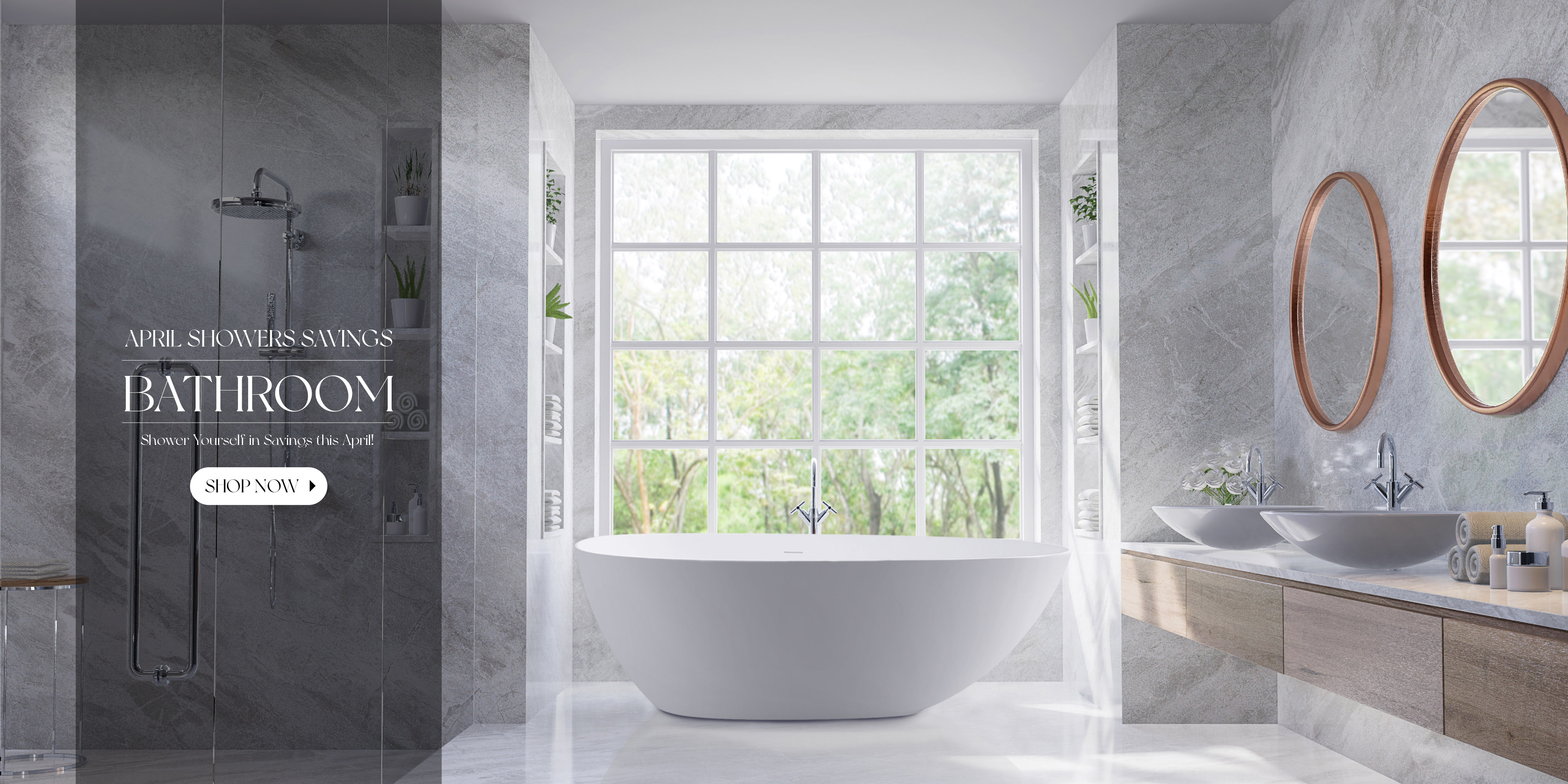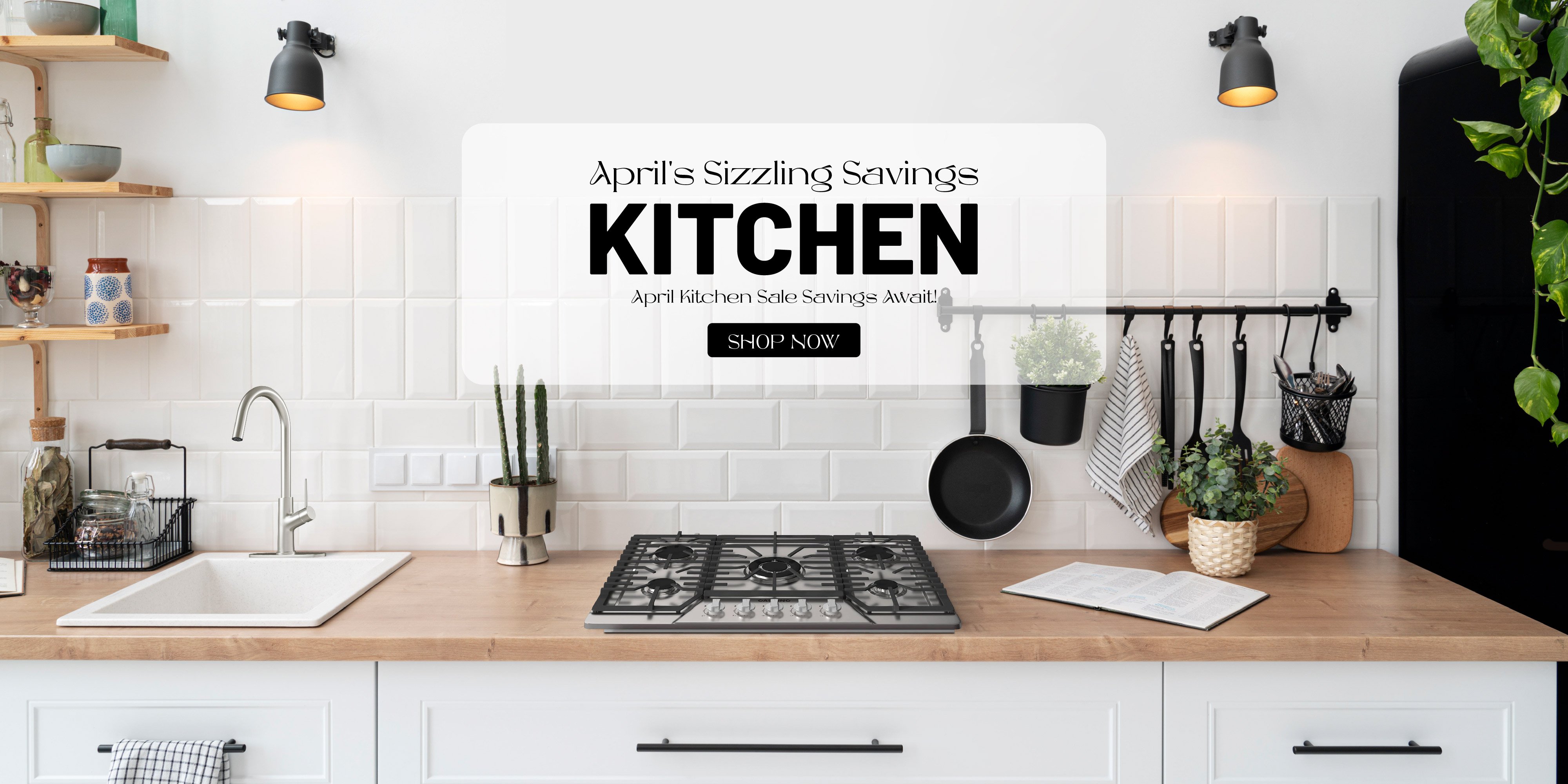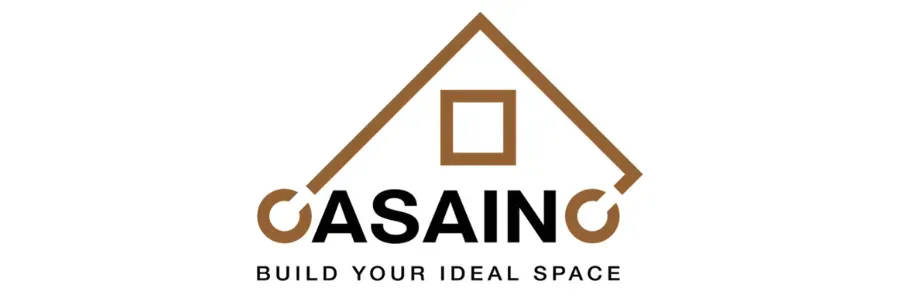A Comprehensive Guide to Professional Bathtub Installation
Mar 10,2023 | CASAINC
🛁Are you looking to upgrade your old tub with a luxurious soaking tub? Installing a new bathtub can be a rewarding DIY project that explores design inspiration and enhances both comfort and style to fit the tub seamlessly into your bathroom. The project involves to install a bathtub with a myriad of components, from the tub itself to drain systems, tub surrounds, and more. Today you'll learn how to install a bathtub and make it solid as a rock. In this step-by-step guide, we'll walk you through the process of installing a new one, ensuring a secure and long-lasting result.
In this blog post, we'll delve into the important following tips and considerations for bathtub installation, covering key aspects such as tub drain opening, tub cover plate, surround access panel, tub flange, tub spout and everything in between. Let's dive in!
Here’s what you should consider how to install a bathtub:
Choosing the Right Tub:
Before beginning the tub installation process, the first step is selecting the right bathtub for your space. Considerations such as material, style, and size play a significant role in this decision-making process.
Material Options:
- Stone Resin Tubs: Known for their durability and heat retention, these cultured marble tubs provide a luxurious feel and are available in various shapes and sizes.
- Acrylic Bathtub: Lightweight and easy to install, acrylic tubs, including the versatile acrylic tub / acrylic bathtub, come in a wide range of styles, making them a popular choice for homeowners.
- Cast Iron Tubs/ Steel Tubs: Renowned for their sturdiness and classic aesthetic, steel tubs, including cast iron tub, are an excellent choice if you're looking for a long-lasting and timeless option, especially when paired with a supportive mud bed installation.
- Fiberglass Bathtubs: Fiberglass tubs are a popular, budget-friendly choice, and adding cement board during installation enhances stability, water resistance, and durability.
- Whirlpool Tub: Featuring soothing hydrotherapy jets and customizable settings for a luxurious and rejuvenating bath.
Style Considerations:
- Freestanding Tubs: Provide a dramatic focal point in the bathroom renovation, offering versatility in placement and various styles to match your aesthetic.
- Soaking Tubs: Designed for deep and relaxing baths, the soaking tub is perfect for those looking to create a spa-like atmosphere in their house.
- Alcove Tubs: The weight-conscious design of the alcove bathtub / alcove tub, nestled within three walls, offers a space-efficient and stylish bathing solution. With its lightweight construction, it's an ideal choice to save space and seamlessly integrate into your bathroom design.
- Walk in Tub: Walk in tubs are a specialized bathtub designed with a watertight door, allowing users to enter easily without stepping over the rim.
- Jetted Tubs: Incorporate therapeutic features such as water jets, perfect for individuals seeking a therapeutic and massaging bathing experience.
- Air Tub: Experience unparalleled relaxation with our air bath, using pressurized air to create a gentler massaging effect. Indulge in spa-like luxury, reminiscent of a whirlpool tub experience.
- Hot Tub: A hot tub is a hydrotherapy device designed for relaxation and therapeutic purposes, characterized by heated water and massaging jets. With a built-in capability to hold heat, hot tubs often utilize a water heater system to maintain the desired temperature.
Size and Dimensions:
- Measure the Space: Ensure you have accurate measurements of the bathroom space to select a new tub that fits seamlessly into the designated area.
- Consider Doorways: Take into account the dimensions of doorways and hallways leading to the bathroom to ensure the tub can be maneuvered into place.
Understanding Average Bathtub Installation Cost:
- Material Costs: The bathtub installation cost is influenced by the type of tub, along with additional features such as jets or special finishes, which can impact the overall tub costs.
- Labor Costs: If you decide to hire professionals for the installation to make installation easier, labor costs, along with the need for extra support, will be a significant factor in your budget.
- Additional Expenses: When considering new tub costs, factor in expenses related to tools, installation materials, and potential unforeseen issues — especially crucial with high-tech models. Ensure a comprehensive budget to cover all aspects of the installation process.
Prepare for Installation:
After finalizing your choice of the ideal bathtub, the next step in the tub replacement process is crucial preparation. This involves two crucial steps: evaluating the condition of the existing tub and ensuring that the bathroom infrastructure is prepared for the upcoming installation.
To begin with, a thorough assessment of the old bathtub is essential. Now the process of bathtub removal starts. Check for any damages, leaks, or structural issues that might impact the new installation. This step is crucial as it allows you to address any pre-existing problems, ensuring a smooth and problem-free transition to the new bathtub.
Simultaneously, it's important to ensure that the bathroom infrastructure is ready for installation. This includes verifying the plumbing and drainage systems to guarantee they are in good working order. It's advisable to inspect the surrounding walls and floor for any signs of water damage or mold that might need attention before proceeding with the installation.
By taking these preparatory measures, you lay the foundation for a successful bathtub installation. Addressing any issues with the old tub and ensuring the overall bathroom infrastructure is in optimal condition will contribute to a seamless and efficient installation process, ultimately enhancing the longevity and performance of your new bathtub.
Assess the Old Tub:
- Thorough Examination: Look for signs of damage, rust, or wear on the old one. Identify any issues with the plumbing connections, surrounding walls or bathroom floor.
- Careful Removal: Disconnect water lines and the bathtub drain lines with precision to avoid damaging existing plumbing.
Compile Tools and Materials:
- Pry Bar and Wrenches: Need to remove the old tub and make adjustments during the bathtub's instructions.
- Utility Knife and Safety Gear: Ensure safety during the removal process.
- Roofing Nails: Useful for securing backer boards and ledger boards during the preparation phase.
Inspect the Bathroom Infrastructure:
- Disconnecting Drain Pipes and Water Supply Lines: Use a pipe wrench to disconnect stubborn connections carefully.
- Check for Water Damage: Inspect surrounding areas for any water damage or mold. Turn off the water at the main line. Address any issues promptly to prevent future problems.
- Examine Support Structures: Ensure that wall studs, backer boards, and ledger boards are in good condition, providing stable support for the new tub.
Dry Fit and Measure:
- Dry Fitting: Place the new tub in the designated space without any water to ensure it fits perfectly.
- Precise Measurements: Mark the locations for the tub drain, faucet, and other accessories. Accurate measurements are crucial for a seamless installation.
Installation Steps:
With the groundwork laid through meticulous preparation, it's time to delve into the comprehensive step-by-step process of installing your new bathtub. This systematic approach ensures a seamless transition and maximizes the efficiency of the installation, allowing you to enjoy your newly selected tub to its fullest potential.
Firstly, begin by carefully removing the old bathtub. This involves disconnecting and capping off plumbing fixtures, loosening and detaching the existing tub from knee wall and its surroundings, and safely disposing of it. Thoroughly inspect the exposed wall and drain area for any structural issues or water damage that may require attention before proceeding.
Once the back wall backer board, and front wall board of old tub are successfully removed one piece, assess the space to confirm that it aligns with the specifications of your new bathtub. This is a critical step to ensure a proper fit and address any discrepancies before the installation begins.
Next, meticulously follow the manufacturer's instructions for installing the new bathtub. This includes aligning and securing the tub in the designated space, making necessary adjustments to ensure level placement, and securely install a bathtub by anchoring it to back wall according to recommended practices, including proper installation of the bathtub drain. Pay close attention to the plumbing connections, ensuring they are tightly sealed to the wall to prevent leaks.
After securely putting the tub in place, focus on sealing gaps outside corners and joints to maintain water integrity. Apply appropriate sealants to prevent water seepage and reinforce the structural stability of the wall stud tub rim installation.
Create a Solid Base:
- Mortar Bed or Adjustable Feet: Depending on the type of tub, lay a mortar bed or use adjustable feet to create a stable foundation. Use your body's weight to set the tub into the mortar bed. Double-check that the tub is level.
- Leveling the Tub: Use a level to ensure the tub is perfectly level. Make adjustments as necessary to avoid any tilting.
Connect the Drain:
- Follow Manufacturer's Instructions: Install the tub overflow drain assembly, including the drain line and overflow pipe, according to the manufacturer's directions.
- Using Plumber's Putty or Silicone: Create a watertight seal by applying plumber's putty or silicone sealant. Secure the drain cover and overflow connections, ensuring proper alignment.
Secure the Tub:
- Leveling with Shims or Adjustable Feet: Use shims or adjustable feet to level the tub accurately.
- Securing to the Floor: Follow the manufacturer's recommendations to secure the freestanding tubs to the floor. This step is crucial for stability.
Install Water Lines:
- Connecting Water Lines: Use a pipe wrench to connect the water lines to the bathtub faucet and any additional features.
- Ensuring Leak-Free Connections: Tighten the fittings securely, verifying that all connections are snug before proceeding.
Protect Surrounding Area:
- Waterproof Membrane or Sealant: Apply a waterproof membrane or bead of silicone sealant to protect all the parts (the floor and walls around the freestanding tub).
- Enhance Aesthetics with Tub Surround: Consider installing a new tub surround, whether it's tile or a solid surface material. Follow manufacturer guidelines for a professional finish.
Final Touches:
As the installation process nears its conclusion, it becomes imperative to conduct a meticulous inspection, leaving no detail unchecked, to ensure that everything is in perfect order before you can fully relish your newly created bathtub oasis.
Commence the final phase by scrutinizing the entire plumbing installation for any potential issues. Examine the seams, joints, and connections to confirm that they are securely sealed, guarding against any potential water leakage. Verify that the bathtub is impeccably level and stable in its designated space, addressing any adjustments if needed.
Pay special attention to the plumbing connections, ensuring they are tightly secured and free from any leaks. Thoroughly inspect the wall stud surrounding areas for signs of water damage or issues that may have arisen during the installation process. Address any such concerns promptly to maintain the structural integrity of the installation.
Once the visual inspection is completed, initiate a practical test of the bathtub's functionality. Turn on the fixtures, check the water flow, and ensure the drainage system is operating seamlessly. This practical evaluation ensures that your new bathtub not only meets aesthetic expectations but also functions flawlessly for a delightful bathing experience.
Before declaring the installation complete, take a moment to clean and polish long edge of the bathtub floor, removing any residual marks or substances acquired during the installation. This final touch contributes to the overall presentation of your new bathtub oasis, creating a pristine and inviting space.
Inspect and Clean:
- Check All Connections: Inspect all connections to ensure they are tight and secure, addressing any issues immediately.
- Water Flow Upgrade: After bathtub installation, elevate your experience with a shower head, tub spout, a freestanding bathtub faucet, or consider a walk-in shower. Explore options with bathroom remodelers for optimal water flow.
- Cleaning Up Debris: Use a mild cleaning solution to remove any construction debris from the freestanding tub and surrounding areas.
Enjoy Your New Oasis:
- Fill and Test the Tub: Fill the tub with water and check for any leaks. Ensure there are no gaps, loose fittings, or potential issues that may require attention.
- Relish in Tranquility: Once everything checks out, enjoy the luxury of your properly installed freestanding bathtub. Take a moment to relax.
Frequently Asked Questions (FAQs):
1. How can I get help to install a bathtub?
- Email our dedicated support team at service@casainc.com for quick assistance. Our home improvement experts are ready to reply promptly and provide the guidance you need to ensure a successful installation.
2. What times are your support services available?
- Our support team is available during regular business hours to assist you with any inquiries related to bathtub installation. Whether you have questions about product choices, installation times, or recommendations, we're here to help you every step of the way.
3. Do you offer product recommendations for larger bathroom improvement projects?
- Absolutely! We love helping homeowners with larger bathroom renovation projects. If you're looking to revamp a larger section of your bathroom, we offer expert advice on product selection (including bathtub photo), easiest installation methods, and quick solutions. Just reach out, and we'll recommend products that suit your preferences and enhance the overall aesthetics of your space.
Installing a great bathtub can be a satisfying DIY project with the right preparation and attention to detail. By following this great info and considering the specific requirements of your chosen tub, you can achieve a professional-looking installation that adds both function and style to your bathroom. Confirm that the tub is level, maintaining accuracy throughout the process. Remember to consult professional services for any plumbing or structural concerns, and relish in the tranquility your new solid surface freestanding bathtub, available in many styles, brings to your homes.🏡✨


.jpeg?w=2000&h=1000)





.jpeg?w=2000&h=2000)
